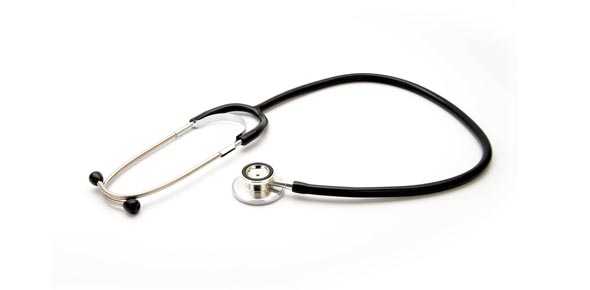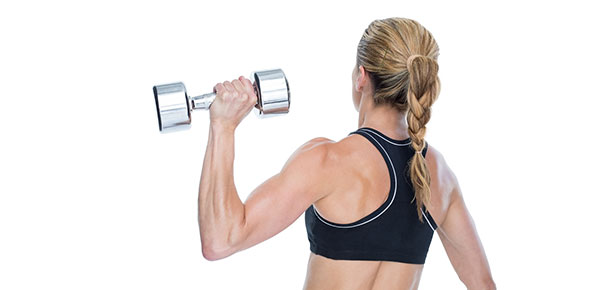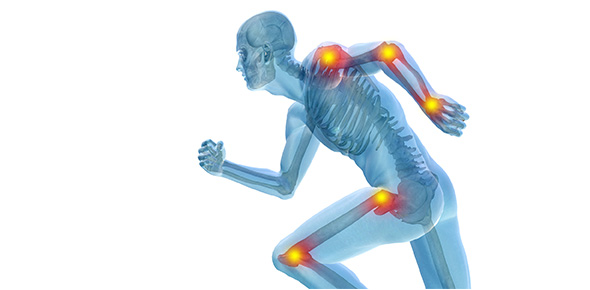Related Flashcards
Related Topics
Cards In This Set
| Front | Back |
|
Describe the typical treatment of community acquired and nosacomial pneumonia
|
1. Typical community acquired pneumonia- strep pneumo, H. flu, klebsiella in alcoholics, TB in immigrants. Presents with acute onset fever, chills, productive cough, pleuritic chest pain, and lobar consolidation on CXR.
2. Atypical community acquired- mycoplasma pneumoniae, chlamydia pneumonia, chlamydia psittaci, legionella (organ transplant patients, renal failure, chronic lung disease, smokers). Presents with insidious onset, headache, fore throat, fatigue, myalgias, dry cough, and fever. Normal pulse with high fever is very suggestive. CXR shows diffuse reticolunodular infiltrates with little or no consolidation. 3. nosacomial pneumonia- 72 hours after hospitalization, staph aureus and gram neg rods (klebsiella, legionella). Confrim diagnosis with CXR. Do sputum gram stain to understand any microbial resistance. CURB 65 score- confusion, uremia, resp rate over 30, BP under 90/60, age over 65 (each worth 1 point, 2 points gets hospitalized and 3 gets ICU). Treatment is based on age: 1. patients under 60- most common are step pneumo, mycoplasma, chlamydia, and legionella. First line- macrolide or doxycyline. Fluoroquinolones as alternative. 2. patients over 60- likely to have atypical. First line drugs are 2nd or 3rd gen cephalosporin. 3. hospitalized patients- fluoroquinolone or 3rd gen ceph plus a macrolide. |
|
Major causes of FUO
|
FUO= temperature over 38.3 that lasts for at least 3 weeks despite 3 outpatient visits, 3 days in the hospital without elucidation of cause, and/or 1 week of ambulatory investigation.
Classes of FUO: 1. Classic 2. Neutropenic- less than 500 neuts 3. HIV- at least 4 weeks after diagnosis 4. Nosacomial Most common causes: 1. infectous- TB, occult abscesses, endocarditis, HIV, mono and other viruses, malaria, UTI, sinusitis, from indwelling devices, C-diff. 2. malignancy- lymphoma (especialy Hodgkins), leukemia, RCC, HCC 3. collagen vascular diseases- SLE, Still's disease, PAN, temoral ateritis, polymylagia rheumatica 4. misc granulmatous diseases- sarcoidosis, Crohn's drugs- sulfonamides, penicillin, quinidine, barbs, diet pills FMF, PE, gout, subacute thyroiditis, factitious |
|
Treatment of strep viridans endocarditis
|
Strep viridans causes subacute bacterial endocarditis that typically affects a malformed/damaged valve. Usually penicillin sensitive and should be treated with:
1. 4 weeks of penicillin G or ceftriaxone or 2. 2 weeks of penicillin G/ceftriaxone + gentamycin |
|
Describe the differences in CSF findings between bacterial and viral meningitis
|
Bacterial- high opening pressure, low glucose, PMNs high protein, and positive gram stain. Treat with ceftriaxone + vancomycin in adults to cover strep pneumo and N. meningitidis. Add ampicillin in the elderly or immunoC ro cover listeria.
Viral- normal opening pressure, normal glucose, leukocytosis (mostly lymphocytes), moderately elevated protein, and negative gram stain. Treat with supportive care. |
|
Describe the common causes of infectious diarrhea
|
1. Viral- adenovirus, rotovirus, norwalk virus
2. Bacterial: Non invasive, toxin mediated (not bloody)- cholera, staph aureus, cereus, vibrio vulnificus, ETEC, C-diff Invasive (bloody)- campylobacter, shigella, salmonella, yersinia, EHEC 3. Parasitic- cryptosporidium, entamoeba, giardia |
|
Discuss the various drugs used in AIDS treatment
|
1. NRTIs- zidovudine, lamivudine, stavudine, didanosine, abacivir, emtricitabine, kivexa, truvada. RTIs block reverse transcriptase's enzymatic function and prevent completion of synthesis of the double-stranded viral DNA, thus preventing HIV from multiplying.
2a. Tenofavir- a nucleoTide RTI 2. NNRTI- enfavirenz, nevirapine, delaviridine. NNRTIs block reverse transcriptase by binding at a different site on the enzyme, compared to NRTIs and NtRTIs. NNRTIs are not incorporated into the viral DNA but instead inhibit the movement of protein domains of reverse transcriptase that are needed to carry out the process of DNA synthesis. NNRTIs are therefore classified as non-competitive inhibitors of RT. 3. Protease inhibitors- all end in -avir. Inhibit assembly of new virion. Can cause lipodystrophy. 4. Fusion inhibitors- enfuvertide, maraviroc. This class of drugs interferes with the binding, fusion and entry of an HIV virion to a human cell. By blocking this step in HIV's replication cycle, such agents slow the progression from HIV infection to AIDS. 3. Integrase inhibitors- raltegravir. Block the action of integrase, a viral enzyme that inserts the viral genome into the DNA of the host cell. Since integration is a vital step in retroviral replication, blocking it. HAART triple therapy usually involves 2 NRTIs + either an NRTI or a protease inhibitor. |
|
Desribe the indications for vaccination with pneumovax
|
Elderly (over 65), health care workers, pulmonary disease, cardiovascular disease, chronic liver disease, chronic renal failure, asplenic, immunoC, and transplant patients.
Vaccination lasts 5 years. |
|
Discuss the causes of pharyngitis and cerical adenopathy
|
Group A strep (pyogenes)- fever, cervical lymphadenopathy, sore throat. Diagnose with throat culture, treat with penicillin or erythromycin.
Infectious mono- fever, sore throat, lymphadenopathy (epecially posterior cervical), splenomegaly, pharyngeal erythema. Diagnose with monospot test (EBV), supportive care. Viral- no fever, but cough and runny nose. Causes include rhinovirus, adenovirus, coronavirus, parainfluenza, and influenza. |
|
Discuss the treatment of an uncomplication UTI in women
|
TMP-SMX for 3 days (7 days if diabetic) or nitrofurantoin for 5 days
If patient cannot tolerate TMP-SMX or resistance is supsected, give cipro |
|
Discuss the treatment of chemotherapy induced neutropenia and fever
|
Medical emergency and defined as a single temp over 38.3 or a sustained temp over 38 with an absolute neut count less than 500.
Management: History and physical: look for catheter sites, possible rashes, anus, and mouth. Take cultures before antibiotic therapy. Divide patients into low or high risk: Low risk- clinically stabke, neutropenia less than 7 days. Treat with oral empiric therapy of cipro + amoxacillin/tazobactam and monitor for at least 24 hours. High risk: patient has neut count less than 100, signficant comorbidities (hemdynam unstable, GI symptoms, neuro changes, new pulm infiltrates, hypoxemia, underlying lung or liver disease), or neutropenia over 7 days. Admit patient and give piperacillin/tazobactam or cabapenem or 3rd gen ceph. Monitor. If they do not respond, consider resistances or fungal infections. |
|
How is C-diff treated?
|
Stop offending antibiotic
Give metronidazole or vancomycin |
|
Discuss the differences between Hep A, B, and C
|
Hep A- fecal oral transmission, diagnosed based on Anti- HA, self limited, don't need specific treatment. Travelers should be vaccinated and past immunization can be given post exposure.
Hep B- sexual or parenteral transmission, diagnosed based on HbsAg, HbeAg (active replication), HbcAb (core antibody present during window). Causes acute liver inflammation that may present with jaundice, dark urine, RUQ pain, nausea, vomiting, fever and malaise, and possible hepatomegaly. 90% of cases resolve whereas 10% become chronic. Those cases that become chronic have an increased risk of HCC. Treat with inteferon alpha and lamivudine. Associated with PAN, membranoproliferative and membranous GN, arthritis, dermatitis, and poymyalgia rheumatica. Hep C- sexual or parenteral transmission. Diagnosed based on anti-HCV and PCR. 80% become chronic and have increased risk of HCC. Treat symptomatic chronic cases iwth interferon alpha and ribavirin. Associated with porphyria cutanea tarda, cryoglobulinemia, membranoproliferative GN. No vaccine. |
|
Discuss the differential diagnosis of upper and lower GI bleeding
|
Upper GI bleeding- proximal to ligament of Treitz in the distal duodenum. May present as hematemesis (bright red indicates bleed above the stomach, coffee grounds indicate a bleed in or below the stomach), melena, or occult blood in stool.
1. Above GE junction- oropharyngeal bleeding or epistaxis, esophagitis (due to GERD, CMV, herpes, candida, or hx of radiation), esophageal varices, esophageal cancer, Mallory Weiss 2. Stomach- gastric ulcer, gastritis, gastric cancer 3. Duodenum- ulcer, aortoenteric fistula (with hx of aortic graft) 4. Other- coagulopathy, NSAIDs, anticoagulant use, AVM Lower GI bleed- typically presents as hematochezia, anemia, or occult blood in stool. Melena is rare for a lower GI bleed. 1. Vascular- angiodysplasia, hemorroids 2. Diverticulosis 3. Malignancy- a lower GI bleed in patients over 40 is considered cancer until otherwise. Right sided tumors have melena and left sided tumors have hematochezia. 4. Inflammation- IBD (UC), infection. 5. Ischemic colitis |
|
Discuss the treatment of dudoenal ulcers
|
If patient is over 55 and/or has alarm symptoms (weight loss, vomiting, jaundice, bleeding, mass odynophagia, family history) --> upper endoscopy
If patient is younger than 55 with no alarm symptoms, it depends on the risk for H.pylori. If there is little risk --> PPI or H2 blocker for 4 weeks If there is high risk (prevalence high in endemic area, clinical suspicion, or no response to meds) --> test for H. pylori with urease breath test, H.pylori serology, and/or stool antigen. Triple therapy- ampicillin, clarythromycin (or metronidazole), and PPI Quadruple therapy- tetracycline, metro, bismuth, and PPi |
|
Discuss the differences between UC and Crohn's
|
Crohn's:
Clinical presentation- fever, post-prandial colicky pain. Mucusy diarrhea. Palpable mass in RLQ. Location- anywhere in the GI tract but most often in the terminal ileum. Endoscopic findings- skip lesions, apthous ulcers Histology- transmural inflamm, granulomas Complications- strictures, fistulas, perianal disease, abscesses, renal stones (calcium oxalate), malabsorption, erythema nodosum, gallstones. CRC risk- 3X that of pop UC: Clinical presentation- bloody diarrhea, rectal bleeding, urgency on defecation. Location- large intestine, always involves the rectum Endoscopic findings- continuous, diffuse inflamm, friable mucosa, sometimes pseudopolyps Histology- affects mucosa only, no granulomas Complications- strictures, toxic megacolon, primary sclerosing cholangitis, pyoderma gangrenosum CRC risk- 7-30X that of pop |






